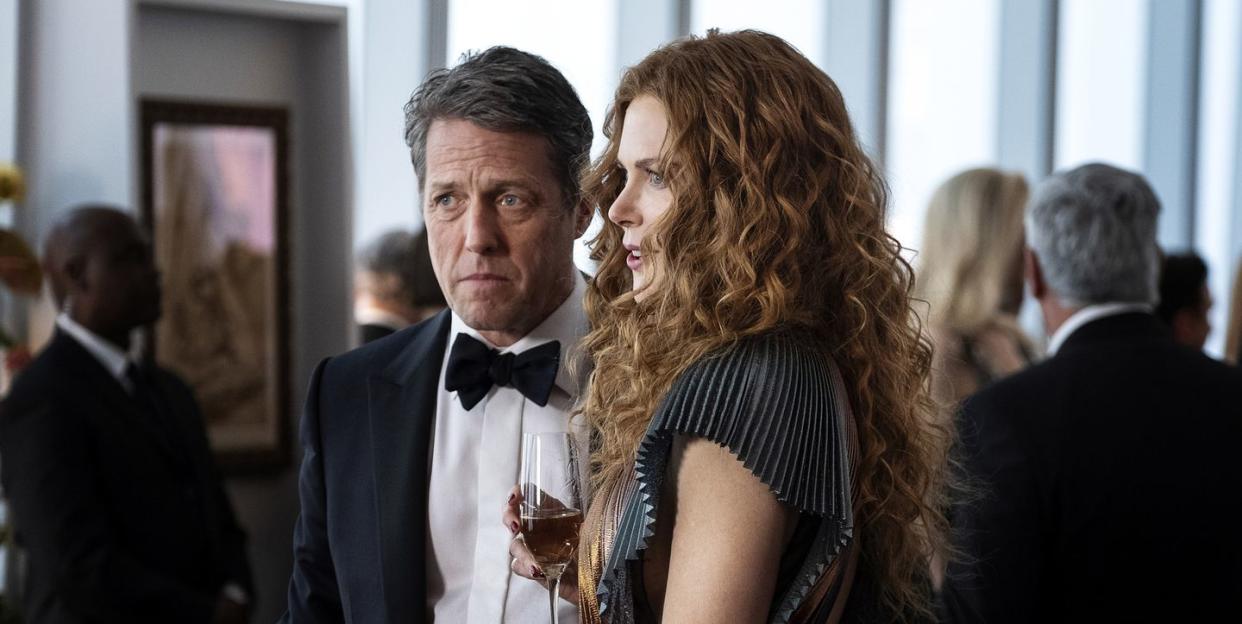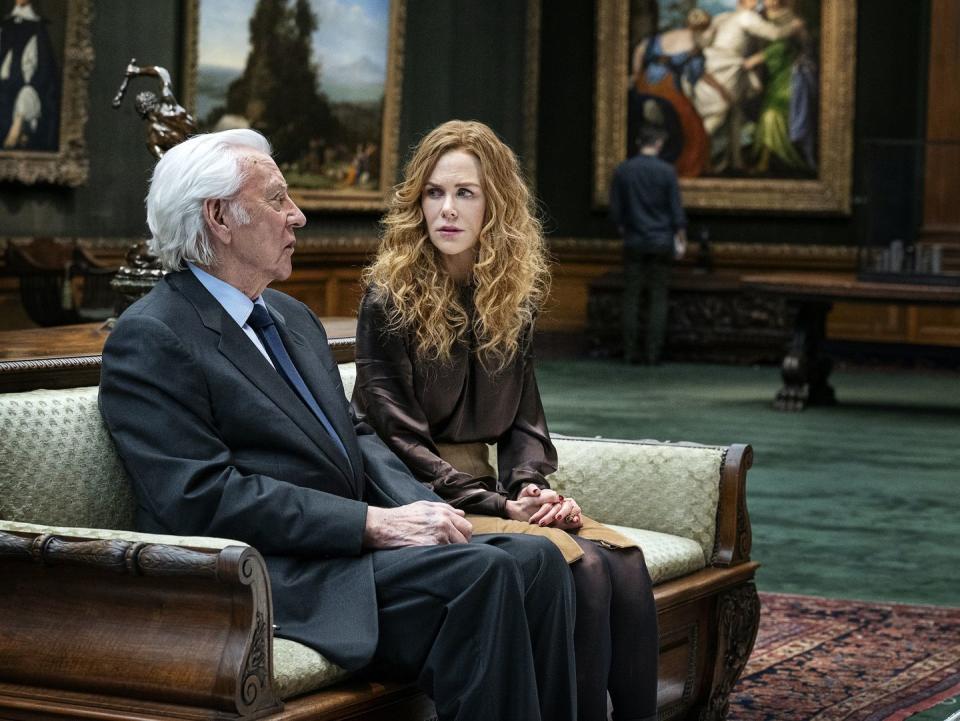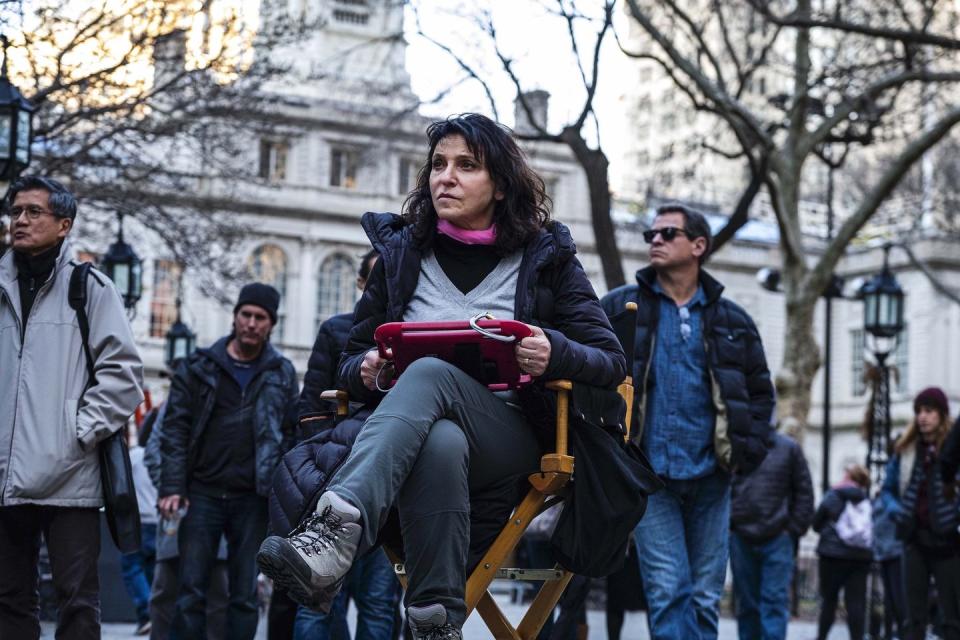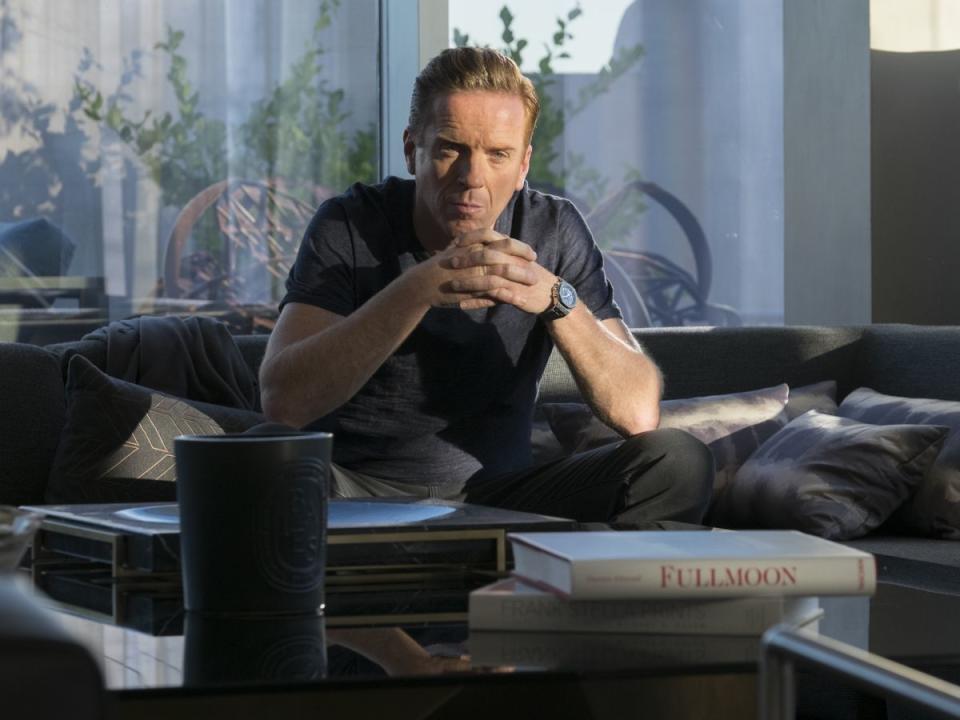How to Be Rich on TV: The Undoing and What Money Looks Like on Screen

It’s no surprise that The Undoing, the new series now airing on HBO, has been compared to Big Little Lies. After all, the programs share a network as well as major talent on and off the screen; David E. Kelley is a writer and creator for both shows, and Nicole Kidman lends her acting chops to each. Then there are the stories; both are about murders that rock tight-knit, rich communities and reveal fault lines beneath their polished surfaces. Of course, anyone who watches both series will see that more makes them different than similar, however a comparison does reveal something worth noting: the distinct depiction of wealth that TV uses to separate not only the haves from the have-nots, but the haves from the have-mores.
While Big Little Lies takes place in a comfortably rich world in Northern California, its signifiers of status—proximity of one’s home to water, the small but telling difference between who sports AirPods and who’s stuck with regular earbuds—are entirely different from those of The Undoing, which paints a portrait of a blue-blooded family torn apart by a murder at a prestigious private school.

“Nicole Kidman’s character comes from an old-school family that’s had great wealth across generations, and that looks different from newly acquired money—we wanted to be very, very clear about that,” says Susanne Bier, the series’ director. “I think being meticulous about that is so important, because that’s where you either get it right or you head in a cliché, predictable, and possibly untrue direction.”
That means making Kidman’s Undoing character, Grace Fraser, only truly at ease on only certain blocks of the Upper East Side—among what Bier calls “quiet fortresses on manicured streets”—or in the Hamptons, and in a world designed to not only telegraph money and power to viewers, but also ring true. “A powerful part of the pleasure for the audience is access to a world that most of us have no entry to,” Bier says.

It’s something that The Undoing does in a variety of ways, from filming on hushed New York blocks to dressing its characters in understated luxury and planning carefully the art on their walls. Take for example Franklin Reinhardt, Grace’s patrician father played perfectly by Donald Sutherland. His sprawling pre-war apartment is covered in work by Francis Bacon, Juan Gris, and J.M.W. Turner. Whereas his daughter’s domicile, shared with her husband, played by Hugh Grant, and their son, has a style that’s still monied but much more relaxed—or as relaxed as can be with Gerhardt Richter paintings on the wall.
“Donald Sutherland is obviously playing a very established patrician character,” explains Fanny Periere, the fine-art coordinator for the series. “When you first meet the Hugh Grant and Nicole Kidman characters, you think sort of rich and powerful—and then you meet her father. That’s how you chose a Bacon for him. It just seems like a fit. Even if viewers can’t necessarily identify it, it will impart something to the setting and help define his space.”
It’s a subject in which Periere is an expert. Not only did she work on The Undoing, but she also lent her talents to Succession and Billions, finding art to help flesh out the worlds of the series’ characters and tell viewers a bit more about them. Succession fans might recall the Egon Schiele in the living room of Logan Roy, the billionaire paterfamilias played by Brian Cox, or the Frank Thiel photo of a sinking glacier in a family office, possibly foreshadowing a family’s downfall. “Creating someone like Logan Roy or Donald Sutherland's character is different than creating someone like [Billions’] Bobby Axelrod,” Periere says. “He’s younger with newer money, he’s a little more brash and lives in a world that’s flashy. He hasn’t acquired the understated taste of older money.”
Practically, portraying characters who have more also gives these shows more to play with. “When you're in the world of the rich, it's kind of limitless,” says Aaron Lazar, a star of the new series Filthy Rich that lets him expand his character—a slippery televangelist who’s married into a faith-media dynasty—with cars, clothes, and high-end accessories. “We’d go out of our way to find the right things for the character, the sunglasses or rings or suits; and I’ve always wanted to drive a white G-Wagen. I think we’re all just fascinated by this world, after all money makes the world go 'round.”

Though it’s not always the case that the most excessive items do the heavy lifting. “Popular culture regularly portrays rich people as always being in fancy clothes, but when it comes to billionaires, especially self-made ones, it’s often the case that they don’t have to wear a suit,” Billions creator David Levien told T&C last year. “They know how rich they are, and anyone who matters to them knows also. They’re playing to their own audience of about 200 people in the world who are on their level, not to the rest of us.”
Either way, Bier thinks setting her series in the world of the one percent gives it higher stakes for characters and viewers alike. “I think part of the thrill is a look into that world, but also the downfall of someone from such an escalation,” she says. “It’s so much more visible than if the story had taken place in a different part of society.
“There’s always part of me looking at those windows of houses on the Upper East Side with that desire to know what’s really going on behind the façade.”
You Might Also Like

